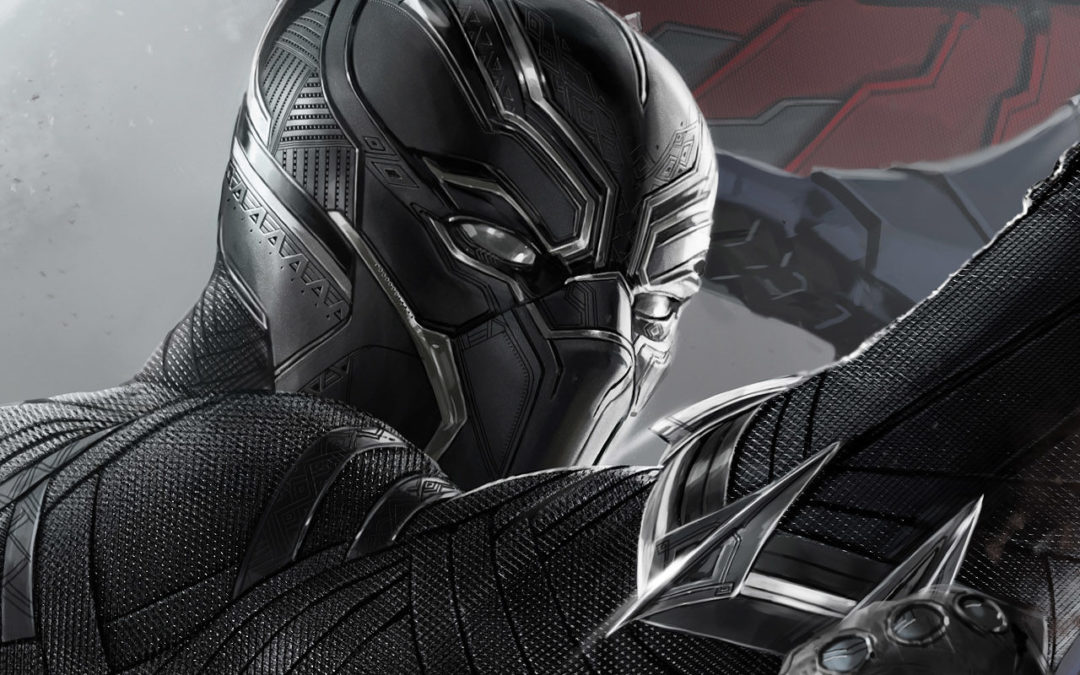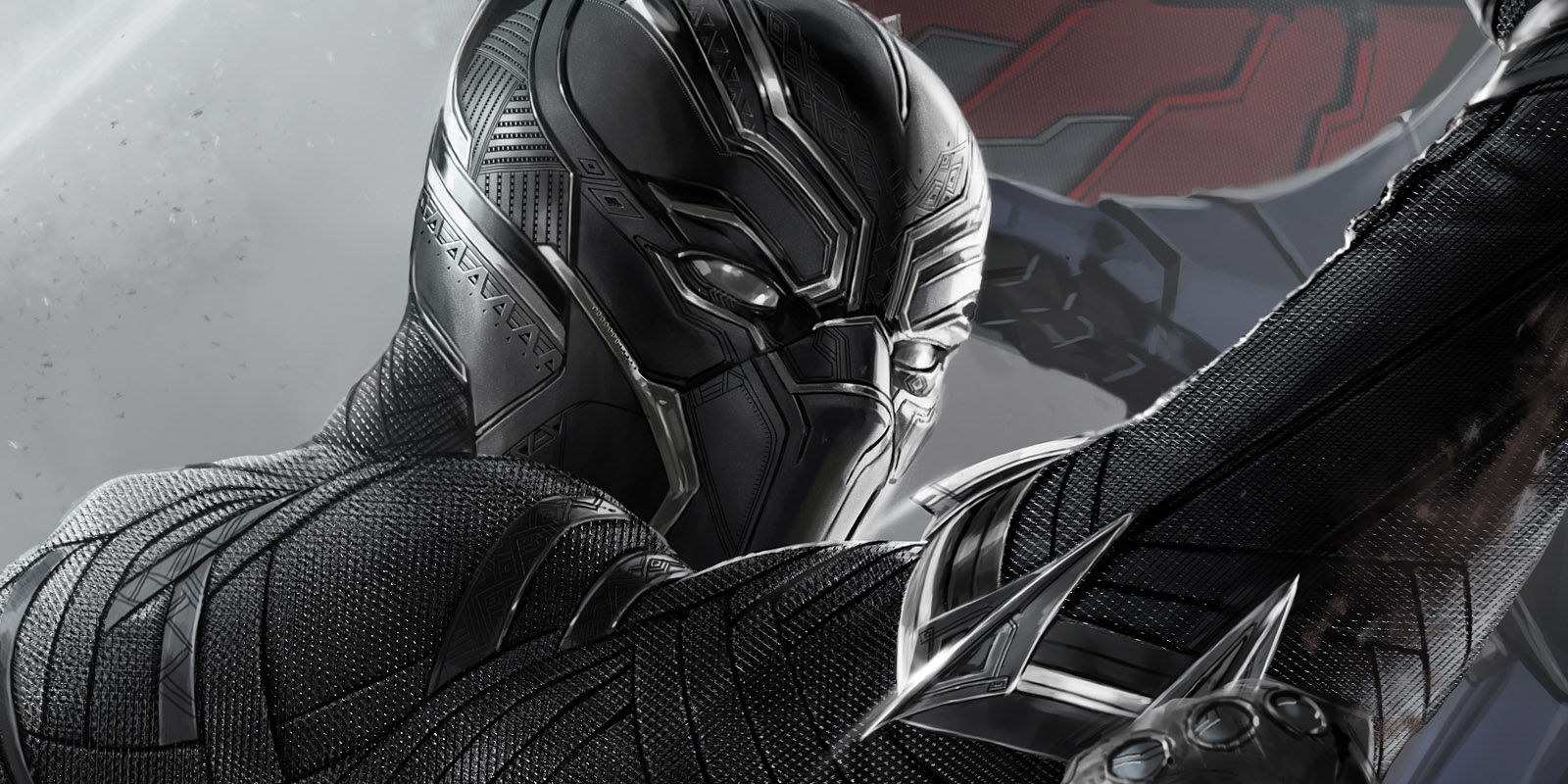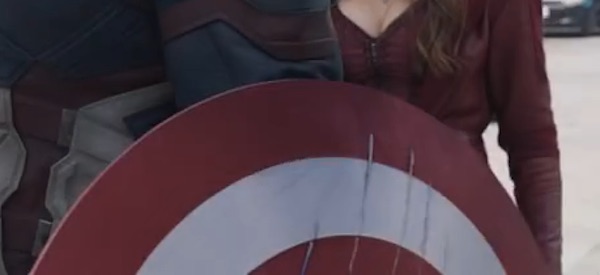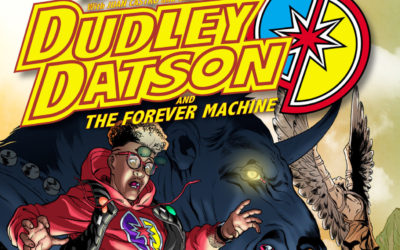If you live in the Marvel Universe, vibranium makes the world go ‘round.
Okay – not literally, but it’s a major player in the Marvel Universe, both comics and cinematic. Thanks to most vibranium in either Marvel Universe being found in the Black Panther’s home nation of Wakanda, the fictional metal has gotten some new attention lately, thanks to Captain America: Civil War and the new Black Panther comic series by Ta-Nehisi Coates and Brian Stelfreeze (available at your local comic shop or digitally at Comixology).
Before we dig into some real science about vibranium, a little history:
Despite it being known as part of the Black Panther’s larger mythology, vibranium first appeared in Daredevil #13 in early 1966. That version – or isotope – of vibranium was later clarified to be native to Antarctica and was named Anti-Metal, due to its ability to dissolve metal. Wakandan vibranium was revealed as a distinctly different type of metal later in Fantastic Four #53, later in 1966, just after the Black Panther’s introduction in FF #52. Wakandan vibranium is the most common variety, and is referred to as “vibranium” in the Marvel Universe.
Physical property-wise, vibranium absorbs sound and kinetic energy. According to the science of the Marvel Universe, the more energy it absorbs, the stronger its intermolecular bonds get, so therefore the tougher it gets. The energy stored in vibranium can be tapped into by Wakandan technology (and thus it supplies most of the energy needs of the nation), although the upper limit of vibranium’s energy storage is unknown. Yeah – there’s some major hand-waving with the science and the laws of physics there, but we’ll go with it.
Most famously, Captain America’s shield is made out of vibranium…okay, technically – the cinematic shield is 100% vibranium, while the comics shield has a long history of being alloyed with adamantium and other metals after replacements are made. Cap’s shield has demonstrated the properties of vibranium by taking a direct hit from Thor’s hammer in The Avengers and cushioning his fall in The Winter Soldier; while Black Panther showed off how vibranium could be woven into the cloth of his costume, as well as forged into retractable claws in Captain America: Civil War.
But that’s vibranium in the Marvel Universe. It’s not a real metal in our universe (*). But is there anything like it? Is there any metal, or combination of metals that exhibits the same properties of vibranium? That’s a little out of our wheelhouse – for that kind of stuff, we’d need something like an Assistant Professor in Mechanical Engineering/Materials Science and Engineering.
Lucky for us, we found one that was up for talking to us.
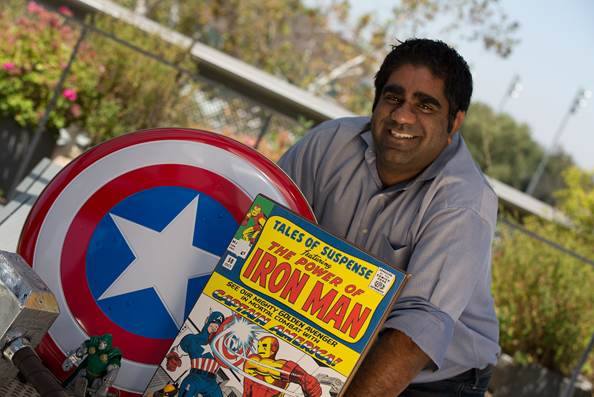 Suveen Mathaaudhu is what the title says up there at the Bourns College of Engineering at the University of California Riverside and has a keen interest in the intersection of pop culture and science. He’s won award for engineering communication and talks, writes and designs exhibits about superhero science in comics, television and movies.
Suveen Mathaaudhu is what the title says up there at the Bourns College of Engineering at the University of California Riverside and has a keen interest in the intersection of pop culture and science. He’s won award for engineering communication and talks, writes and designs exhibits about superhero science in comics, television and movies.
And vibranium is his favorite metal – so much so that working with a team at North Carolina State University, he developed the highest strength in a magnesium alloy. Basically something in our world that mimics some of vibranium’s properties.
The Science Of: Dr. Mathaaudhu, let’s just start off with your thoughts about vibranium and its history through your eyes…
Suveen Mathaaudhu: Vibranium! The much misunderstood and mysterious element from the Marvel Universe, and my favorite metal.
Here’s some thoughts…
The key feature of vibranium is its ability to absorb energy. But as you know, energy cannot be created or destroyed, it has to turn into… something (light, sound, thermal…) at some point. So in reality, it’s ability lies in both the capability to absorb energy, but to release energy in a controlled way. In the Marvel comic universe, it is said that vibranium can store the energy in its bonds and release it as needed. This makes it a near perfect material for many applications.
The two applications most people know about would be, of course, Cap’s shield and all the cool stuff it does; the movie states that it is 1/3 the weight of steel (they mean density), and super strong. But less well known is that the element that Tony Stark “discovered” in Iron Man 2 is actually vibranium isotope as well (this was written in the novelization, but not the movie), and thus can supply a tremendous amount of energy to his suit and weapons via releasing of stored energy. This makes sense given that Howard Stark used the vibranium to make Cap’s shield and then was able to map its atomic structure to the map of Stark Park.
So, if vibranium really existed, it could be used as both a lightweight structural material – think how light we could make our planes, trains, automobiles, and thus lessen the usage of fuels…and a perfect battery material for powering the world around us. This idea is strongly emphasized in the new Black Panther comic where Black Panther and the people of Wakanda are able to utilize the energy from their underground supply of vibranium, which gets it’s energy from things like earthquakes.
TSO: Is there any analogue to vibranium’s strength and density in our world?
SM: The closest analogue is Titanium… it’s fairly lightweight, very strong, and can accept a lot of damage before failure. While not rare, it’s difficult to extract and process, thus making it expensive and suited for only high-end applications, such as aircraft components and armor panels.
TSO: Likewise, the mechanism that’s used to explain vibranium’s energy storage is that it stores energy in its bonds – is there anything that’s a comparable analogue in our world?
The closest analogue to this is the physical property called “damping”. Energy has to go somewhere or change form, and this can be through sound, thermal mechanism, deformation or light emission, amongst others. Inherent to any material is its ability to damp, or absorb vibrations, in its bond structure or microstructure. As an example, old car bumpers were made of metal, however newer bumpers are made out of foamed polymers the absorb a significant amount of energy.
Metals still play a role in that they can be both structural (hold a load) and damping at the same time, and typical high damping metals include magnesium and many iron-based alloys (e.g. cast iron). As a demonstration of high damping, I normally use bulk metallic glasses (I collaborate quite a bit with Liquidmetal, Inc.):
Now in the comics/movies, not only can the vibranium damp energy, it can store and release energy as well. The closest metal example I can give to this are NiTi (nickel-titanium) shape memory alloys that can store mechanical energy through phase transformation that is released with thermal input:
Then, or course, there are nuclear metals (e.g. Uranium) that store tremendous amounts of energy in their atomic bonds…
TSO: So what’s the downside if we’re trying to model vibranium in our world…it probably couldn’t store endless amounts of energy, could it?
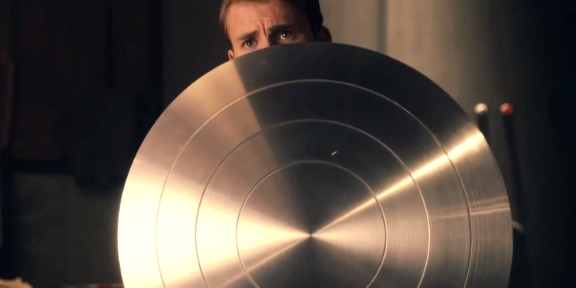 SM: I think that even in the comic world that vibranium can’t store infinite amounts of energy. Here’s two examples. In Captain America: The First Avenger, Agent Carter shoots the shield with three bullets and you hear them impacting, and you hear the resonance afterwards. If the energy were being fully absorbed, there would have been no sound. A second example is from The Avengers where Thor hits Cap’s shield; he bounces back, there is a flash of light, and the forest around them is leveled.
SM: I think that even in the comic world that vibranium can’t store infinite amounts of energy. Here’s two examples. In Captain America: The First Avenger, Agent Carter shoots the shield with three bullets and you hear them impacting, and you hear the resonance afterwards. If the energy were being fully absorbed, there would have been no sound. A second example is from The Avengers where Thor hits Cap’s shield; he bounces back, there is a flash of light, and the forest around them is leveled.
All these are indicators of incomplete energy transfer efficiency. So, yes… it can be overloaded, as can real-world materials. When I worked in the Department of Defense, we would design armor materials to survive certain threats, but when up against a projectile going 10000 ft/s, there is not much that can be done to absorb that energy, and 20 feet of steel can be penetrated easily.
 TSO: While we’re talking about the energy though – as we saw in Civil War, it absorbs kinetic energy. For example, when T’Challa gets hit by bullets but doesn’t even flinch…let’s walk through that a little. There’d be no force pushing him back? Wouldn’t momentum be an issue?
TSO: While we’re talking about the energy though – as we saw in Civil War, it absorbs kinetic energy. For example, when T’Challa gets hit by bullets but doesn’t even flinch…let’s walk through that a little. There’d be no force pushing him back? Wouldn’t momentum be an issue?
SM: Again… it depends on what other energy absorption mechanisms were in place… sound, light, heat. Momentum plays a role, but only if all the energy transfer is elastic (e.g. the liquid metal ball), and no other dissipation mechanisms are present.
TSO: So the energy absorption may not work out well in reality, but where would you use it due to its durability and low density?
SM: Firstly, I’d use it for transportation where we currently are burdened by excessive weight. Light, strong materials would result in better fuel/energy efficiency, and reduced wear-and-tear at no expense to the safety of the passengers. Secondly, I’d see its use in the medical/prosthesis realm where people could be helped by something that returns energy easily, and is also lightweight.
TSO: We’ve explored a bunch of possibilities of what vibranium could do and the benefits it would provide. What are your feelings about the ethics involved? Does Wakanda have a responsibility to share this possible “game-changing” technology with others? Do we, for example, when the US or an organization creates something that requires a specific resource have that responsibility, ethically?
SM: I’ll draw an analogue with nuclear materials/technology. Just because it can be useful to society doesn’t mean that it doesn’t come with inherent dangers and risks that the technology will be used for unethical purposes. In the same way that certain countries limit nuclear proliferation, Wakanda limits the distribution of Vibranium, and when they don’t, things can go wrong, for example, the energy source Ultron used to levitate Sokovia in the second Avengers movie. These types of Janus technologies must be stewarded and protected, not because the sustain the technological/economic dominance of one country over another, but because of the dangers that proliferation of the technology brings.
(*) Okay – there is something called vibranium in our world. This year, Hyperloop Transportation Technologies developed a composite material they named “vibranium.” The real vibranium is a carbon fiber -based material that’s extremely tough and, as you guessed it, is part of the Hyperloop pod. Reportedly, vibranium is eight times lighter than aluminum, ten times stronger than steel and is “smart,” meaning it can relay information regarding temperature, stability, its integrity and more – without wires, and virtually instantly. This stuff sounds pretty super too.


